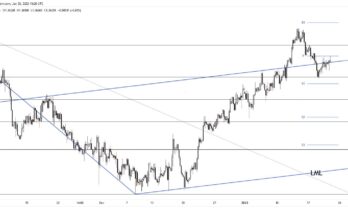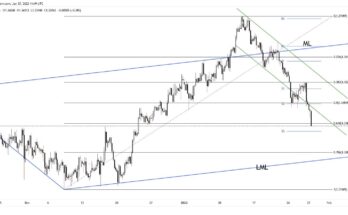What started out as another promising day for equity markets ended up with disappointment yesterday, as the early buying exuberance on the back of Janet Yellen’s second testimony to Congress and Mario Draghi’s press conference was unable to be sustained as the day wore on. The early bounce in equities was faded into the afternoon, as the S&P finished lower by 0.14%, while USDJPY was unable to make any meaningful headway and spent the majority of the session in the high-101s.
The European Central Bank interest rate decision and Mario Draghi’s subsequent press conference were the catalyst for the notable volatility experienced in FX markets yesterday. The EUR initially received a boost after the ECB announced they had kept policy unchanged, but then quickly fell off a cliff after Draghi noted that the strengthening Euro in a low inflation environment is a cause for concern, and that the ECB is comfortable with acting at the June meeting if warranted.
Draghi also seemed to hint that the zone could be a very long period of low inflation, and currently there are more downside risks to the economic outlook than upside risks. Traders read between the lines and deduced that the risk for the introduction of monetary easing at the June meeting increased substantially, sending long-EUR positions rushing for the exits, causing EURUSD to crash into the low-1.38s. While the May inflation reading will be a very important data point ahead of the next ECB meeting, Draghi’s tone did seem to suggest the board is warming to the idea of unorthodox monetary policy options, putting the focus squarely on Draghi to finally put his money where his mouth is at the next policy meeting.
In what seems to be a regular occurrence these days, the Loonie was a benefactor of external developments, as the culling of long-EUR positions lead to a wave of macro sales in EURCAD, with the spillover Loonie strength driving USDCAD into the low-1.08s. Already beginning the day on firm footing because of better than expected housing starts and Chinese trade data, the developments out of Europe added to the Loonie demand, with the focus turning squarely on the employment situation in Canada today.
Rounding out the week for data releases out of China, consumer inflation numbers for the month of April hit the wires overnight, and showed that prices eased to an 18-month low with the headline reading coming in with a 1.8% increase compared to the last twelve months. The tamer than expected inflation reading substantiates the argument that domestic demand remains muted in the region, and the steady path towards a more sustainable growth trajectory has succeeded in not overheating the economy. Although we would argue yesterday’s data point taken in isolation does little to change the Government’s outlook towards a larger scale easing program, it does give them a little more breathing room should they want to tweak the reserve requirement ratios of banks if they feel their 7.5% GDP growth rate is in jeopardy. The Shanghai Comp finished its session lower by 0.21% while USDCNY remained flat at 6.22.
The drubbing the Euro experienced yesterday continued overnight, with a fresh wave of selling pressure taking hold after Germany’s trade data for the month of March came in on the soft side of expectations. Exports fell for a second consecutive month decreasing by 1.8%, accelerating from the 1.3% decline witnessed in February and the consensus estimate of a 1.3% increase.  The value of imported goods also fell over the month of March, yet the 0.9% decline was not as drastic as exports, thereby leading to a smaller trade surplus than had been forecast. As a result, EURUSD is trading with a solid offer tone this morning, dragging the pair into the high-1.37s as we get ready for the North American hand-off.
Keeping focus across the Atlantic, the Pound has also fallen from investors graces over the last few sessions, and after GBPUSD was rebuffed at the 1.70 level, there has been an exodus of investment flows out of Sterling. Today’s domestic economic data for the region did little to remedy the situation, with Industrial Output missing estimates but Manufacturing Output coming in better than expected, essentially making the numbers a wash and failing to provide traders with the impetus to reverse the selling pressure; Cable is off another 0.4% this morning, currently trading hands south of the 1.69 handle.
Heading into the North American open, equity futures are pointing to a soggy open when the opening bell is rung, with some follow-through selling from the close of yesterday’s session still permeating through markets. The DXY has rebounded nicely over the past two sessions, and at the time of writing is grinding its way back into the high-79s. The commodity complex is seeing a slight pick-up in demand, with both Oil and Gold futures decently bid, although they remain tethered around $100/barrel and $1,300/ounce respectively.
In terms of tier one data for the North American session, Canadian job figures for the month of April were released earlier this morning, coming in much lower than economists had forecast and causing the Loonie to promptly reverse its recent strengthening trend. The headline reading showed that the Canadian economy shed just under 29k jobs last month, a stark contrast to the median analyst estimate for an increase of 12k.  Digging deeper into the report things didn’t get much better, with full-time employment having 31k jobs axed, and the labour force participation rate dropping to 66.1%. As expected the domestic labour market remains mediocre at best, with today’s report highlights the struggles companies are having in forecasting future demand as competition and excess slack weigh on economic performance. After the report USDCAD rocketed into the high-1.08s before meeting initial resistance, with the round figure of 1.09 acting as the next obstacle for the pair to overcome should the selling pressure on the Loonie continue.
Closing out the week in regards to economic data points, the Job Openings and Labour Turnover Summary (JOLTS) for the US is due to be released later this morning at 10:00EST. The March JOLTS report is expected to show job openings increased to 4.2M, up from the 4.17M reported in February as the labour market strengthens and more business look to hire additional employees in the hopes demand will soon pickup. Another print over the 4M mark would bode well for the American economy, and as the supply of jobs picks up this could entice discouraged workers back into the labour force, increasing the participation rate and add to the overall quality of employment gains in the labour market.
Further reading:Â Could EURUSD Be The Trade Of The Year?



